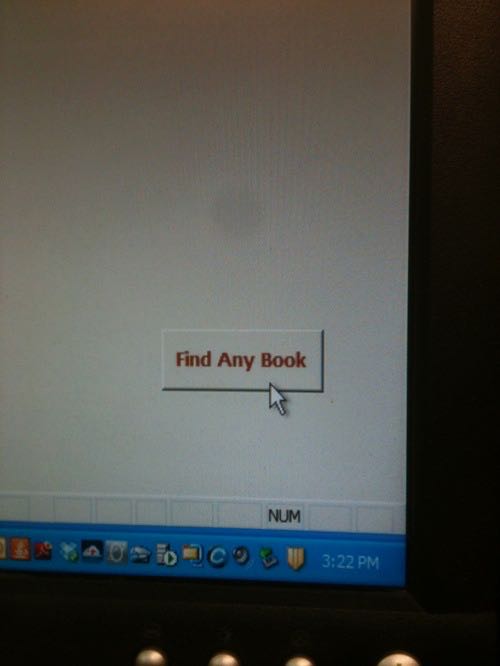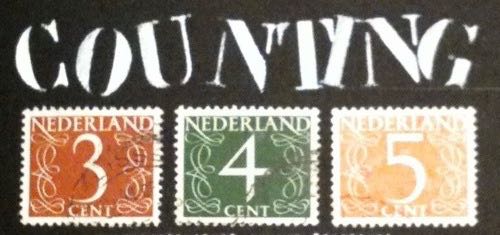
January - March 2012
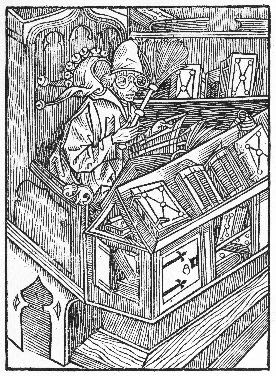
26-27 March 2012
Current Reading :
— Joseph Conrad. Almayer’s Folly. A Story of an Eastern River (1895).
— Jason A. Wyckoff. Black Horse and other Strange Stories. Tartarus Press, [2012]. Newly published collection of 16 fantastical tales in American settings.
California and science fiction
— Cynthia Kadohata. In the Heart of the Valley of Love. Viking, 1992
Novel of a dystopian California of rationing, arbitrary arrest, and decaying infrastructure, nominally the year 2052 : a near-future that seems at once much closer and yet infinitely removed from our present, as this is a future in which the computer has not shaken the roots of the world-tree. A bleak, carefully observed story. With a vocabulary item that has been a useful descriptor of a certain type ever since I first read it :
‘ . . . but she was a chirp. Everything was fine and wonderful and terrif with her. There was a riot every day in one city or another, but everything was fine. ’
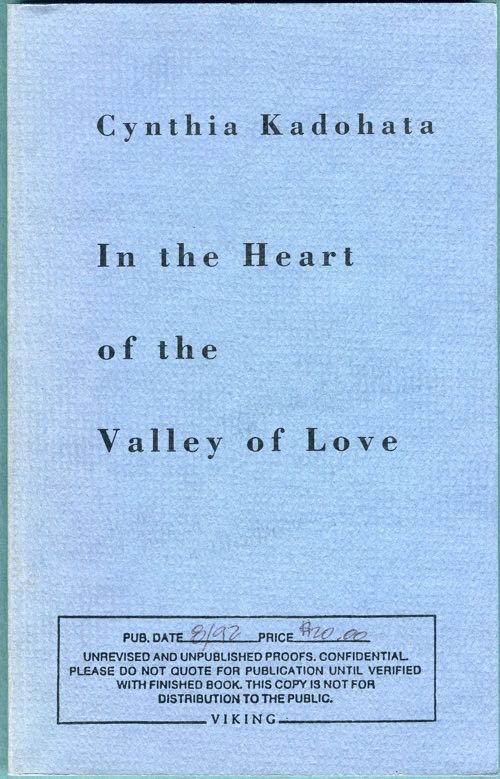
The Huntington Library
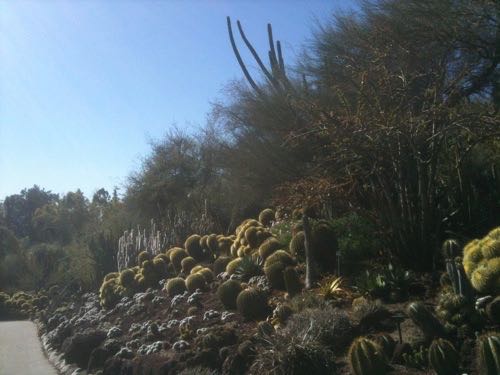
Your correspondent saw the Kemble-Devonshire copy of The tragedy of the Dutchesse of Malfy, 1623 : all leaves inlaid, with Kemble’s notes, 1798. And out-of-doors, in the desert garden, landscapes from another world, including the Namibian quiver tree.
Commonplace book
“ Languages, quite simply, are the most human thing about humans ” — Claude Hagège, On the Death and Life of Languages (2009).
Yeast as defining characteristic of civilization. I cite: Beard on Bread (1973) & Stephen H. Buehner. Sacred and Herbal Healing Beers (1998).
“ To ‘ blurb ’ is is to make a sound like a publisher ” — Gelett Burgess, the man who invented the word (1907).
In February, I visited The Museum of Jurassic Technology with a friend who described it as a museum of meaning ; I thought it a museum of perception. In any event, a truly superior cabinet of curiosity : Athanasius Kircher, Sonnabend on Obliscence, Soviet space dogs, Tell the Bees. http://mjt.org.
Killer App
Secret button in the command center of a large online bookseller.
Seen in the wild
— Fred Schwed, Jr. Where Are the Customers’ Yachts ? New York, 1940.

— Matt Ruff. The Mirage. Harper, [2012].
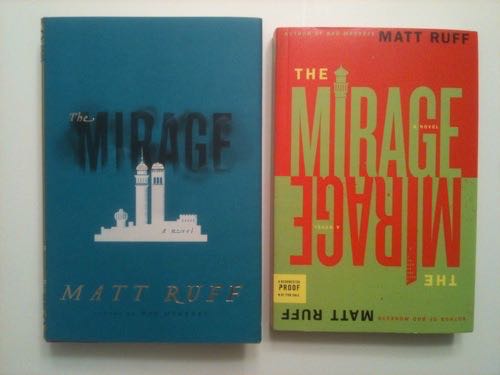
Published book (left); advance proof (right) [inscribed copies, received 15 February].
Larger picture : here.
Recent reading :
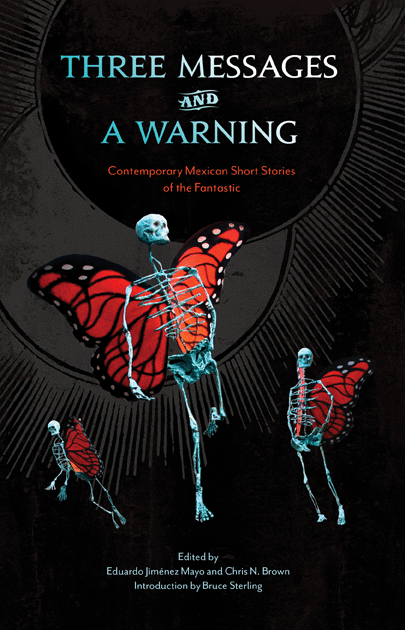
— Three Messages and a Warning. Contemporary Mexican Short Stories of the Fantastic. Edited by Eduardo Jiménez Mayo & Chris N. Brown. Small Beer Press, 2012.
— — — —
“ But robots can’t do that ! ” — Robert Sheckley, 1973
— Robert Sheckley. Is That What People Do? Short Stories . Holt, Rinehart and Winston, [1984]. Re-reading Sheckley dispels those Berryman moments. Old friends, such as “ Cordle to Onion to Carrot ” (1969), and “ The Robot Who Looked Like Me ” (1973), and “ Silversmith Wishes ” (1977).
— — — —
— James Walsh. There Was Something in the Weather . Libellulæ no. 3 Proteotypes, 2012. Found poem from the Diaries of John Ruskin, “ one part of diary for intellect another for feeling ”.
— Russell Hoban. Riddley Walker [1980]. Expanded Edition. Indiana University Press, [1998].
— Michael Connelly. The Drop. A Novel. Little, Brown, [2011]. En voyage à Los Angeles, une petite goutte de vin du pays.
— G. Thomas Tanselle. Book-Jackets: Their History, Forms, and Use . Oak Knoll, 2011. “ surviving jackets from the nineteenth century are scarce . . . the large majority of those that do survive are known in only a single copy ”.
— The Cambridge Companion to Fantasy Literature . Edited by Edward James & Farah Mendlesohn. Cambridge University Press, 2012. With a brilliant chapter by Greer Gilman on “ The Languages of the fantastic ” — that rare, real thing & it’s prose by Gilman ! ! ! Ooh, hours of fun : a Chronology a.k.a. a Canon : which authors made it in, who didn’t ; and, why ? (the real question).
A Question of Ripples in a River
The Wind in the Willows (1908) is one of my favorite books, and I know it well. It is a pleasure to re-read it, to marvel at the very early Sherlockian pastiche that Grahame planted in the exchange between Mole and Rat on the Badger’s doorstep in the Wild Wood — that Mole plays Watson to Rat’s Holmes is not my fancy, it is an idea exceedingly well-established *. What I have observed during these past few days is how much the character of the Toad — brash, decisive, and, above all, utterly self-confident — anticipates the tastes and boldness of Richard Hannay. The similarities are numerous : a penchant for disguise as a member of the lower classes — the Toad as washer-woman, Hannay as milkman, road-mender, or pack-shepherd — and the capacity to play the part well enough to slip invisible beneath the the gaze of vigilant watchers ; a taste for expensive motor cars and speed — the Toad stole a motor while its owners were having luncheon at an inn, Hannay stole a forty horse-power touring car while the owners were otherwise occupied.
That John Buchan read The Wind in the Willows when it appeared is not beyond surmise ; and that a few years later he drew upon that reading — and that Toad — when he composed The Thirty-Nine Steps (1915) may be a foolish conjecture ; but it is one that I cannot shake now that it has suggested itself to me. All the more so when I consider how swiftly Richard Hannay conceived the notion of settling down in a country house with a library-cum-trophy-room, once he visits Sir Wallter Bullivant later in the novel. And what is Toad Hall, that eligible self-contained gentleman’s residence, but the very locus of Hannay’s vision of what he had been fighting for — little England, old and kindly and comfortable — at the beginning of Mr. Standfast (1919), as he arrives at Fosse Manor ? Kenneth Grahame, a more acute student of modernity than one might at first glance credit him for being, even struck the perfect tone in the camaraderie of a small band fighting against stiff odds and the thrill of their victory.
* Skene-Melvin, David. "A Study in Literary Influence," SHJ , 6, No. 1 (Winter 1962), 16-17. Universal Sherlock Holmes C11800. -- A5596 : http://special.lib.umn.edu/rare/ush/06F4.html
This update of the Endless Bookshelf contains lots of hints and brief notes ; some may be expanded in the next couple of days. Your correspondent has been working on other writing projects. And I was re-reading The Wind in the Willows (see above).
This exhibition at Grolier Club is worth a look : Ray Safford, Rare Bookman [Scribner’s rare book dept., 1880s to 1920s], through 13 April. http://www.grolierclub.org/
The New York Antiquarian Book Fair will be held 12 to 15 April at the Park Avenue Armory. I will be exhibiting at booth E01 (James Cummins Bookseller). Let me know if you would like a ticket.
22 January 2012
Five Years of the Endless Bookshelf
Thank you for reading the Endless Bookshelf throughout the past five years, during which time more than 1,000 books have been reviewed, illustrated, listed, evoked, invoked, puzzled over, alluded to, or simply cited. The best source of new material has been word of mouth and suggestions from friends, so please keep sending books, writing notes, or reporting the Last Three books you have read. And if you have been meaning to write the Endless Bookshelf, now is the time [this means you, DVS !].
I am looking forward to continuing to read my way through the works of Joseph Conrad, and to reading The Mirage by Matt Ruff (forthcoming from Harpers, 2012). As I am engaged upon a couple of longer term writing projects, updates to the Endless Bookshelf may be irregular during the coming months.
[HWW]
* the picture is a detail from the title page of Claudia Cohen’s Counting (2009), with Dutch postage stamps designed by Jan van Krimpen.
— — — —
My Man and other Critical Fictions

You may order a copy of the newest book from Temporary Culture, My Man and other Critical Fictions by Wendy Walker, here.
— — — —
California International Antiquarian Book Fair
Your correspondent will be exhibiting at the 45th California International Antiquarian Book Fair, in Booth 615, James Cummins Bookseller, 10-12 February at the Pasadena Convention Center in Pasadena. Come say hello . Let me know if you would like a ticket. Copies of My Man and other Critical Fictions (including the beautiful hand bound subscribers issue) will be on display.
Recent reading :
— Karin Altenberg. Island of Wings. Quercus, [2011]. Novel of life on the remote island of St Kilda in the early 1830s.
— — — —
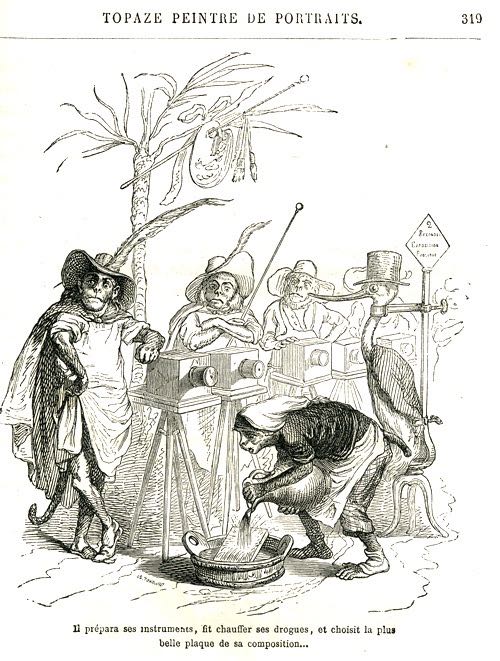
— [Scènes de la] Vie Privée et Publique des Animaux. Vignettes par Grandville. 1842 ; Hetzel, 1868. A wonderful comic work, with classic illustrations. The picture of ape-daguerrerotypists must rank among the very earliest satirical responses to the new art of photography. Topaze, the ape portraitist, opens a photography studio in Brazil ; after an elephant-Sultan, enraged at his portrait, kicks the equipment to pieces, Topaze casts himself into the Amazon.
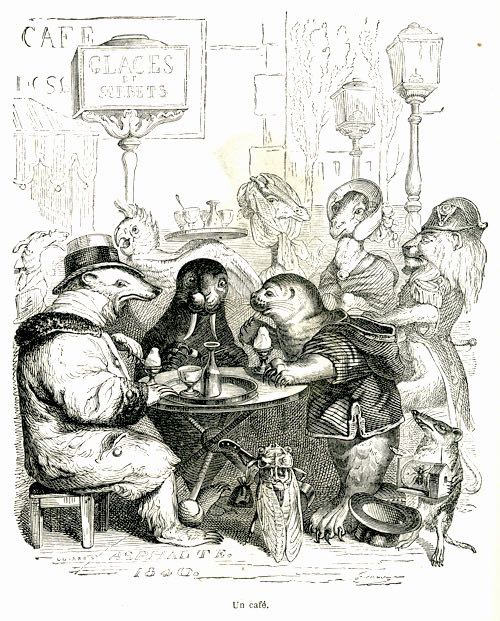
— — — —
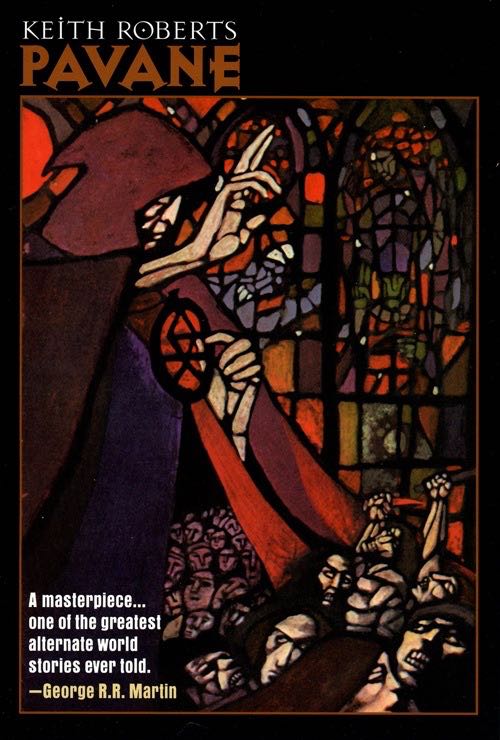
— Keith Roberts. Pavane. 1969 ; Old Earth Books, [2011]. Re-reading a masterpiece. Superb alternate history novel, gritty, technologically obsessive, and brilliant : he knew to leave gaps. From my first reading theirty years ago I remembered the broad sweep but not the richness of the language ; until I came to this passage towards the very end, where the castles of England and Wales declare for the revolt, and the litany of place names and crunchy historic syllables took my breath away, again :
And from far out of the west, calling through the sea mist, the words that were like the tinkling of old armour ; Berry, Pomeroy, Lostwithiel, Tintagel, Restormel ; while the lights crawled forward from the heath, and far out on the sea.
— — — —
— William Gibson. Distrust That Particular Flavor . G.P. Putnam᾿s Sons, [2012]. Collected nonfiction, including “ The Net is a Waste of Time ” (1996), and “ An Invitation ” (2007), his introduction to the New Directions re-issue of Labyrinths by Borges, and his recollection of how his first reading of “ Tlön, Uqbar, Orbus Tertius ” “ opened something within me which has never yet closed ”.
— — — —
— Jo Walton. Among Others . A Tom Doherty Associates Book. Tor, [2010]. A fine novel of making sense of the world through reading. Walton’s diarist reflects upon deniable magic : “ You can almost always find chains of coincidence to disprove magic. ” And yet a genuine magic occurs : what lovely leafy joy triumphs in the final confrontation, and how fully rooted (from the very first page) is the long, healing trajectory from desolation to the sylvan final image.
— — — —
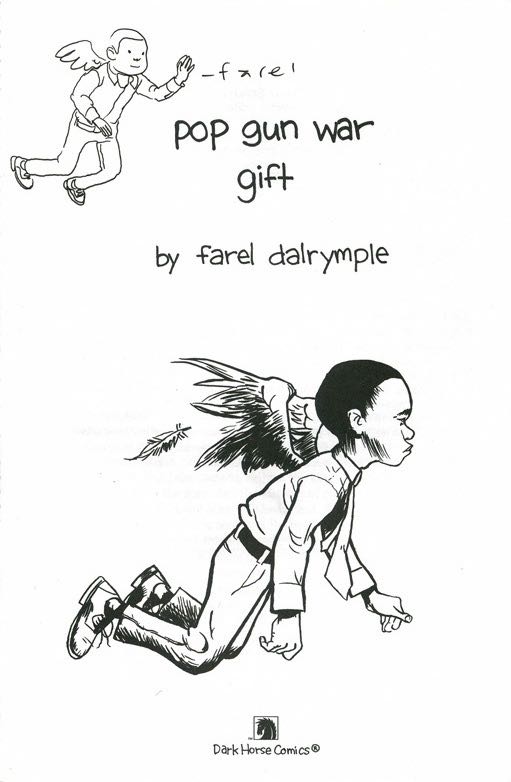
— Farel Dalrymple. Pop Gun War. Gift. Dark Horse Comics, [2003]. With a signed vignette by the artist on the title page. Wild story of fantastical events in a gritty, beautifully drawn city. The opening chapter recalls the conclusion of Perdido Street Station (though Miéville did not employ a chain saw !). Originally published in five parts in 2000-2002.
— — — —
— Robert Wolff. William Carleton. Irish Peasant Novelist . Garland, 1980. Ireland’s great nineteenth-century literary figure, almost as prolific as Dickens ; this study turns up fascinating tensions between his roots and his joining the establishment side. Carleton is author of Valentine M'Clutchy, the Irish Agent ; or the Chronicles of Castle Cumber Together with the Pious Aspirations, Permissions, Vouchsafements, and Other Sanctified Privileges of Solomon M'Slime, A Religious Attorney (Dublin : James Duffy, 1847).
— — — —
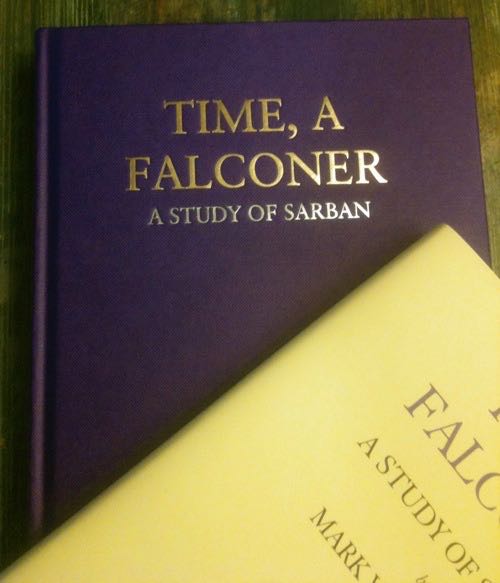
— Mark L. Valentine. Time, A Falconer. A Study of Sarban. Tartarus Press, 2011. Short biographical study.
— Neal Stephenson. Reamde. William Morrow, 2011. Early on in this engaging romp, I identified a couple of key sentences “ . . . it would always be a place of exile. ” “ I was perhaps naive. ” And I knew it would be fun when I read this indicator of new twists in the plot : “ competitive fury at the fact that he had been outdone by the suicidal improvisations of this fanatic ” — as if there were a chance that a Stephenson plot would not be spurred and goaded to delightful complexities .
— — — —
en direct de Paris
— Michel Houellebecq. H. P. Lovecraft. Contre le monde, contre
la vie . [1991; J’ai Lu, 2010]. « De ses voyages dans les terres douteuses
de l’indicible, Lovecraft n’est pas venu nous rapporter des bonnes
nouvelles. » In his « essai » Houellebecq identifies racism and fears at root of cosmic horror, and marvels at the rigorousness of character displayed by Lovecraft.
This is one of the best reflections upon Lovecraft. An English translation was
published in 2005 ; I always avoided it with care, because I wanted to read the
essay in French. I think that this Wellbeck chap must have discovered Lovecraft
about the same time I did (as a teenager in Paris, I read Lovecraft in English,
Derleth & others in French paperbacks).
Eugène Marais, revisited *
In one of the earliest posts of the Endless Bookshelf, I noted my persistent interest in the life and writings of Afrikaans poet and pioneering ethologist Eugène Marais. One day last year, in a library far from London or South Africa, I opened a very early printed book and was surprised to recognize this bookplate :
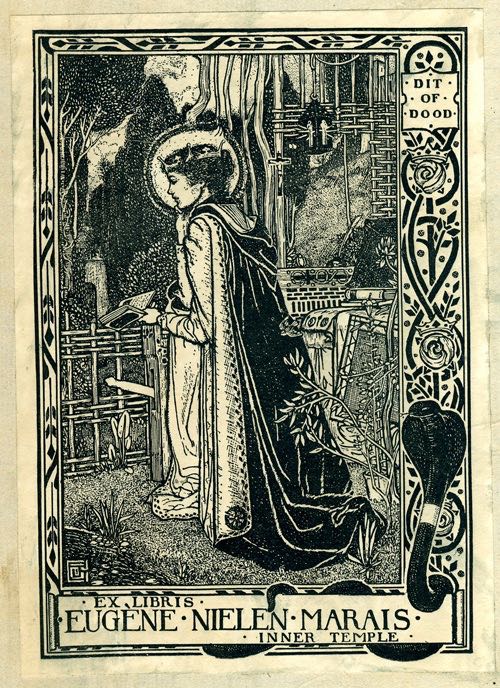
— [Marais, Eugène] Bookplate, London, 1897. 4-3/4 x 6-1/4 inches. Design by James J. Guthrie (his monogram at lower left). The motto, Dit of Dood, translates as “ This or Death ” ; in The Dark Stream. The Story of Eugène Marais (Jonathan Ball, 1982), reflecting upon the time Marais spent in London in the 1890s, Leon Rousseau devotes a substantial passage to discussing the symbolism and implications of this bookplate. I would like to acknowledge the assistance of Tom Boss in identifying Guthrie as the artist.
I am interested in the long reach of ideas : I learned of Eugène Marais through reading Reno W. Odlin’s reflections on Adventures in Unhistory by Avram Davidson ; in the course of our correspondence, Odlin sent me a photocopy of “ The Bavenda’s Sacred Beads ”. Guy Davenport mentioned another essay by Marais in The Geography of the Imagination . A decade later, perhaps, I found a copy of the Rousseau biography, where the bookplate is reproduced. ** Eventually I even found a copy of the Versamelde Werke (1984). The acquisition of specialized knowledge (and the context of understanding in which to apply it) occurs over time ; while it is not a process calculated on a geological scale, neither is it something that can be crammed in an instant — and yet it can be summoned in a lightning spark of recognition, as when I opened a thick vellum bound book and saw the bookplate.
* This entry updated on 16 April 2012 to record the identification of the artist who designed the bookplate.
** In early 2003 I lent The Dark Stream to Janwillem van de Wetering, who wrote, “ Afrikaans poets all seemed to be on opium, dagga (marihuana) and alcohol (in die kar nog ’n sopie op die kerkhof nog ’n hopie). They didn’t live long and had a way with words. Many Dutch writers say Afrikaans is the ideal language to write poetry in. ”
8 January 2012
In Memoriam : John McWhinnie
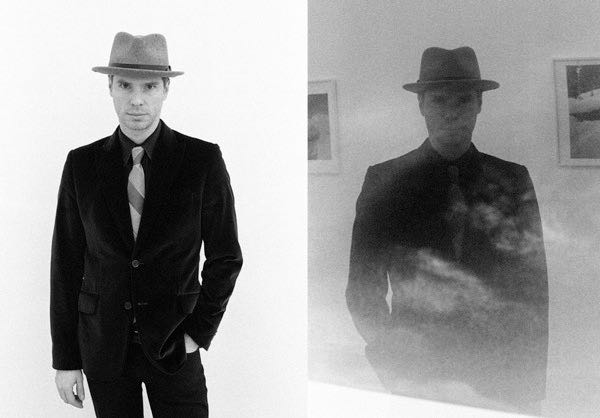
Portrait of John McWhinnie by Peter
Sutherland.
John McWhinnie drowned on Friday afternoon 6 January. He was a sharp and unconventional thinker, a great rare book dealer, and someone whom I was honored to call a friend. He was a specialist in “ original manuscripts and letters, as well as inscribed books, from the period nearest my literary sensibility : the beats and sixties counterculture ”. It was always interesting to talk with him, and he really appreciated and “ got ” stuff that was off the beaten path. Some of the legendary science fiction material that I have handled went to him. He was 43 years old.
The photograph above (courtesy of Peter Sutherland) accompanies his interview of John McWhinnie. This short excerpt gives a sense of John’s zeal :
“ The chase, the pursuit of the book that no one thinks exists, or if they think it exists they figure it is no longer attainable. And, once I find that book, because I usually do as I’m relentless in my pursuit, I love cataloguing it. Cataloguing is an activity that I imagine would have made for a good short piece by Jorge Luis Borges. It’s basically a practice akin to detective work. You try to understand the book, its provenance, to whom it was inscribed, how it travelled from author out into the world : everything you need to know to make the thing a living artifact, not just a museum bound mummified object. ”
The complete interview is worth reading and can be found here :
http://petersutherland.tumblr.com/post/3043979570/john-mcwhinnie-is-a-rare-book-dealer-publisher
This creaking and constantly evolving website of the endless bookshelf : I expect that some entries will be brief, others will take the form of more elaborate essays, and eventually I will become adept at incorporating comments or interactivity. Right now you’ll have to send links to me, dear readers. [HWW]
electronym : wessells
at aol dot com
Copyright © 2007-2012
Henry
Wessells and individual contributors.
Produced by Temporary
Culture, P.O.B. 43072, Upper Montclair, NJ 07043 USA.
